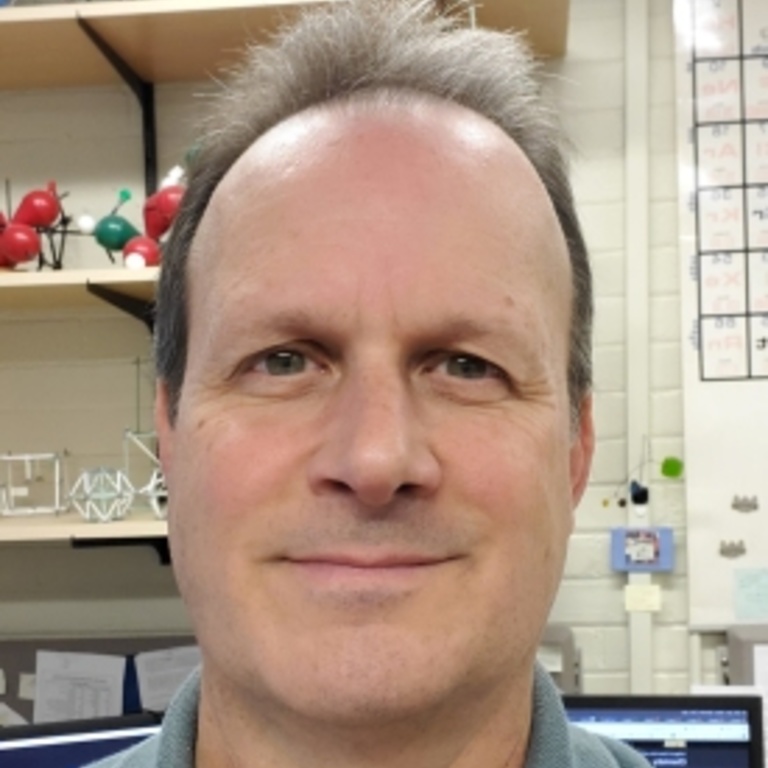Edward G. Gillan
Keywords
- Inorganic materials chemistry
- Energy
- Environmentally relevant electrocatalysis
- Photocatalysis
Focus areas
- Environmental/atmospheric
- Materials/polymer
- Synthesis
Research interests
Our research program exploits reaction thermochemistry in the examination of moderate-temperature, sometimes very rapid, decomposition routes to produce inorganic materials with unusual structural, morphological, and physical properties. Conventional solid-state synthetic methods rely on high temperatures to facilitate chemical reaction between relatively stable and inert starting materials. These are very successful and form the core of many commercial materials growth processes, but they are generally limited to the production of thermodynamic phases with long-range structural order and crystallinity (~ 100 μm dimensions). New shorter or less harsh approaches to materials syntheses are highly desired to exploit advantages of compositional and size control of solid-state materials at atomic and nanoscale levels to produce useful micrometer or nanometer sized products.
The Gillan group is pursuing several materials chemistry research directions. A few broad research goals are listed below. Please see the Gillan Group research web site for more specific information.
- Develop synthetic methodologies for reactive molecular precursors that will lead to organic and inorganic oxide and non-oxide materials (e.g., TiO2, InN, C3N4, NiO, CoP3, and CoB) with unique and kinetically stable local bonding, crystal phases, structural morphologies, and engineered porosity.
- Design energetic decomposition reactions that produce materials with unusual chemical, structural, physical, and morphological properties as compared to those from conventional syntheses. The flexibility of modifiable chemical synthetic methods will allow access to materials with:
- kinetically stabilized structures with new and functional physical and catalytic properties.
- metastable chemical compositions and structures, sometimes with non-equilibrium doped arrangements, that can allow tunable variations in properties, e.g., magnetic dopant effects and band shifting by incorporation of visibly absorbing metal centers in semiconductors.
- controlled morphology - nanoscale geometries (particles, rods), high surface areas that can lead to improved photocatalytic or electrocatalytic surface reaction chemistry.
- Explore applications for the unique properties resulting from precursor-synthesized inorganic and organic materials to technologically relevant areas including:
- structural materials (hard ceramics and composites)
- magnetic systems (dilute semiconductor dopants)
- catalyst and co-catalyst supports (including materials that are examined for UV and visible light photocatalysis, fuel cell electrochemistry, H2 storage, electrocatalytic oxidation and reduction in water splitting)
Recent publications
- “Rapid and energetic solid-state metathesis reactions for iron, cobalt, and nickel boride formation and their application as bifunctional water splitting electrocatalysts,” Abeysinghe, J. P.; Kölln, A. F.; Gillan, E. G., ACS Materials Au 2022, 2, 489 - 504. DOI
- “Linking solid state reduction mechanisms to size-dependent reactivity of metal oxide oxygen carriers for chemical looping combustion,” Alalwan, H. A.; Augustine, L. J.; Hudson, B. G.; Abeysinghe, J. P.; Gillan, E. G.; Mason, S. E.; Grassian, V. H.; Cwiertny, D. M., ACS Appl. Energy Mater. 2021, 4, 2, 1163–1172. DOI
- “Mechanochemically-assisted solvent-free and template-free synthesis of zeolites ZSM-5 and mordenite,” Nada, M. H.; Larsen, S. C.; Gillan, E. G., Nanoscale Adv. (RSC), 2019, 1, 3918-3928. DOI
- “Phosphorus-rich metal phosphides: Direct and tin-flux assisted synthesis and evaluation as hydrogen evolution electrocatalysts,” Coleman Jr., N.; Lovander, M. D.; Leddy, J.; Gillan, E. G., Inorg. Chem. 2019, 58 (8), 5013-5024. DOI
- “Photocatalytic carbon nitride materials with nanoscale features synthesized from the rapid and low-temperature decomposition of trichloromelamine,” Montoya, A. T.; Gillan, E. G., ACS Appl. Nano Mater. 2018, 1, 5944-5956. DOI
- “Mechanochemical reaction pathways in solvent-free synthesis of ZSM-5,” Nada, M. H.; Gillan, E. G.; Larsen, S. C., Microporous Mesoporous Mater. 2019, 276, 23-28 (online Sept. 2018). DOI
- “Botanically templated monolithic macrostructured zinc oxide materials for photocatalysis,” Black, N. M.; Ciota, D. S.; Gillan, E. G., Inorganics 2018, 6, 103 (16 pages). DOI
- “Enhanced photocatalytic hydrogen evolution from transition-metal surface-modified TiO2,” Montoya, A. T.; Gillan, E. G., ACS Omega 2018, 3, 2947-2955. DOI
- “Rapid solid-state metathesis route to transition-metal doped titanias,” Coleman Jr., N; Perera, S.; Gillan, E. G., J. Solid. State Chem. 2015, 232, 241-248. DOI
- Gillan E. G., “Precursor Chemistry - Group 13 Nitrides and Phosphides (Al, Ga, and In). In: Jan Reedijk and Kenneth Poeppelmeier, Eds. Comprehensive Inorganic Chemistry II, Vol 1 (Chp. 31). Oxford: Elsevier; 2013, pp. 969-1000. DOI
- “Titania and silica materials derived from chemically dehydrated porous botanical templates,” Zimmerman, A. B.; Nelson, A. M.; Gillan, E. G. Chem. Mater. 2012, 24, 4301-4310. DOI
- “Solvothermal metal azide decomposition routes to nanocrystalline metastable nickel, iron, and manganese nitrides,” Choi, J.; Gillan, E. G. Inorg. Chem. 2009, 48, 4470-4477. DOI
- “From triazines to heptazines: Deciphering the local structure of amorphous nitrogen-rich carbon nitride materials,” Holst, J. R.; Gillan, E. G. J. Am. Chem. Soc. 2008, 130, 7373-7379. DOI
- “Low-temperature solvothermal synthesis of phosphorus-rich transition-metal phosphides,” Barry, B. M.; Gillan, E. G. Chem. Mater. 2008, 20, 2618-2620. DOI
- Inorganic chemistry
